 s w i m m i n g s c i e n c e Line weights.. CH1_SP2_G2 swimming scienceEdited by G . J o h n M u l l e noptimizing training and performance THE UNIVERSITY OF CHICAGO PRESS
s w i m m i n g s c i e n c e Line weights.. CH1_SP2_G2 swimming scienceEdited by G . J o h n M u l l e noptimizing training and performance THE UNIVERSITY OF CHICAGO PRESS  The University of Chicago Press, Chicago 60637 2018 by Quarto Publishing plc All rights reserved. No part of this book may be used or reproduced in any manner whatsoever without written permission, except in the case of brief quotations in critical articles and reviews. For more information, contact the University of Chicago Press, 1427 E. 60th St., Chicago, IL 60637.
The University of Chicago Press, Chicago 60637 2018 by Quarto Publishing plc All rights reserved. No part of this book may be used or reproduced in any manner whatsoever without written permission, except in the case of brief quotations in critical articles and reviews. For more information, contact the University of Chicago Press, 1427 E. 60th St., Chicago, IL 60637.
Published 2018 Printed in China 27 26 25 24 23 22 21 20 19 18 1 2 3 4 5 ISBN-13: 978-0-226-28784-3 (cloth) ISBN-13: 978-0-226-28798-0 (e-book) DOI: https://doi.org/10.7208/chicago/9780226287980.001.0001 Library of Congress Cataloging-in-Publication Data Names: Mullen, G. John, editor. Title: Swimming science : optimizing training and performance / edited by G. John Mullen. Description: Chicago : The University of Chicago Press, 2018. | Includes bibliographical references and index.
Identifiers: LCCN 2017047739 | ISBN 9780226287843 (cloth : alk. paper) | ISBN 9780226287980 (e-book) Subjects: LCSH: SwimmingTraining. Classification: LCC GV837.7 .S94 2018 | DDC 797.2/1dc23 LC record available at https://lccn.loc.gov/2017047739 This book was conceived, designed, and produced by Ivy Press An imprint of The Quarto Group The Old Brewery 6 Blundell Street London N7 9BH United Kingdom T (0)20 7700 6700 F (0)20 7700 8066 www.QuartoKnows.com Publisher Susan Kelly Creative Director Michael Whitehead Editorial Director Tom Kitch Art Director James Lawrence Commissioning Editor Jacqui Sayers Senior Project Editor Caroline Earle Design JC Lanaway Illustrators Nick Rowland and Rob Brandt Copy Editor Gina Walker Note from the publisher Information given in this book is not intended to be taken as a replacement for medical advice. Any person with a condition requiring medical attention should consult a qualified medical practitioner or therapist. Cover image Getty images/simonk 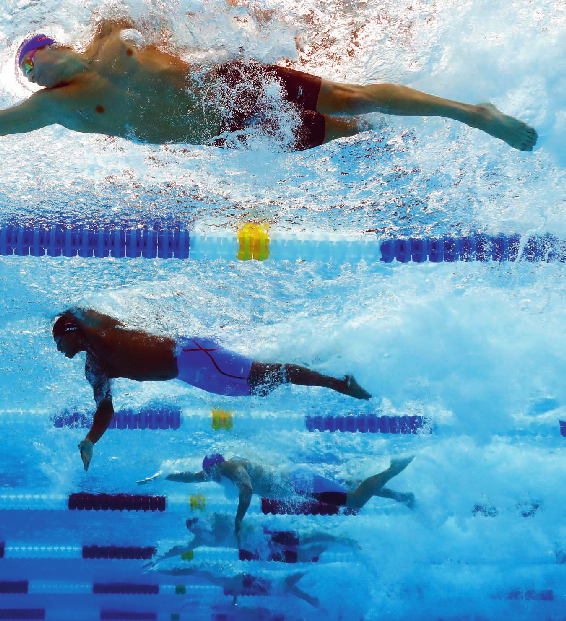 ContentsIIntroductionCHAPTER ONEhydrodynamicsTiago M. BarbosaCHAPTER TWOtechniqueRod HavrilukCHAPTER THREEpool trainingRod HavrilukCHAPTER FOURdryland trainingAllan PhillipsCHAPTER FIVEnutritionKevin Iwasa-MadgeCHAPTER SIXinjury prevention and rehabilitationG.
ContentsIIntroductionCHAPTER ONEhydrodynamicsTiago M. BarbosaCHAPTER TWOtechniqueRod HavrilukCHAPTER THREEpool trainingRod HavrilukCHAPTER FOURdryland trainingAllan PhillipsCHAPTER FIVEnutritionKevin Iwasa-MadgeCHAPTER SIXinjury prevention and rehabilitationG.
John MullenAPPENDICESNotesGlossaryNotes on contributorsIndexTable of measurementsAcknowledgmentsIntroduction Swimming is a popular sport for people of all ages. Children are often first exposed when they learn to swim for safety, perhaps starting with splashing and then doing turns and tumbles, enjoying the feeling of weightlessness and the novelty of being in water. In fact, swimming is a truly unnatural activity for humans, requiring swimmers to be instructed from their first stroke. Unlike any other sport, swimming requires athletes to move as rapidly as possible through a medium more dense than air. The density of water makes the precision of every action important, as the additional resistance of an improper action greatly reduces swimming velocity. Understanding the science behind swimming therefore enhances both proficiency and enjoyment in the sport.
Since appearing in the 1896 Olympics, competitive swimming has seen vast changes in style, form, attire, and location. At first, swimming events were held in open water, before switching to the pool in 1908. Male competitors wore full-body swim suits up until the 1940s, and the nature of fabrics available at the time meant this significantly increased the drag on the swimmer. Lane markers were not used before 1924 and starts werent incorporated until 1936. Swimming goggles were not allowed until as late as 1976. From across the globe, Swimming Science brings you the insights of leading experts in physical, mental, technical, and tactical aspects of the sport.
This book binds together their significant findings with those of scientists who have parsed and studied every element of swimming, most notably the original swimming scientist, Doc Counsilman. Some discoveries were made in the nineteenth century and others as recently as this year. A wide range of sciences is embraced here, as swimming involves a surprisingly diverse array of disciplines. For example, at different stages of his career, Michael Phelpsarguably the greatest male swimmer of all timehas relied on various aspects a With the help of advanced swimming science Michael Phelps of science to hone his swimming to ever more impressive levels. His technical skills, became the most decorated strong work ethic, and training base were developed as a young swimmer in Baltimore, Olympian of all-time. Introduction 
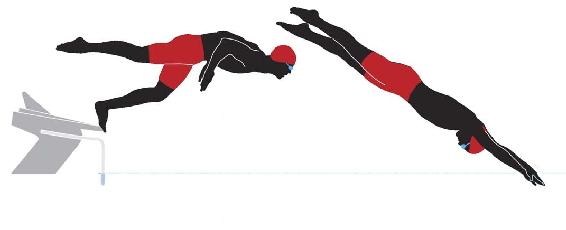
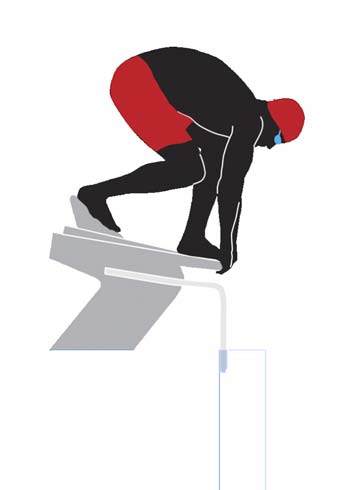 Maryland.
Maryland.
He has subsequently concentrated on physical preparationa key factor in his relatively injury-free careerand has cultivated a mental toughness that has been severely tested under daunting pressure to win multiple gold medals, resulting in amazing race finishes with Milorad Cavic. Each chapter in this book deals with a different scientific discipline, providing the reader with the background to better understand the sport. A single solution doesnt work for every swimmer, so instead of offering a panacea or list of drills, the authors present science-based approaches that enable one to tailor solutions to individual situations. Chapter 1, Hydrodynamics, breaks down how the water interacts with the body during swimming. Understanding how to stay streamlined in the water and how various joint positions create torque and power is essential in the sport. The biomechanics of effective swimming strokes are dealt with in Chapter 2, Technique.
Unlike in other sports, technique is the greatest contributor to success in swimming, yet remains the area requiring most improvement, for the majority of swimmers. Some aspects of technique are not included due to space limitations, such as kicking, breaststroke timing, freestyle and butterfly arm recovery, backstroke finishes, relay take-offs, and Introduction turns. Chapter 3, Training, discusses the physiological demands of swimming and how training influences swimmers ability to deal with these. Competitive swimming today requires a very high level of physical performance, so Chapter 4, Dryland Training, delves into the science behind improving fitness and strength through training outside of the pool. Chapter 5, Nutrition, considers the optimal proportions of different foods and fluids for swimmers to consume, to regenerate the body for maximum performance. The sports heavy physical demands can lead to injury, so Chapter 6, Injury Prevention and Rehabilitation, addresses the best ways of preventing or minimizing the risks of tissue damage.
Finally, each chapter includes a detailed look at how specialized equipmentsuch as that used in computer fluid dynamics, kinematics, g d
Next page


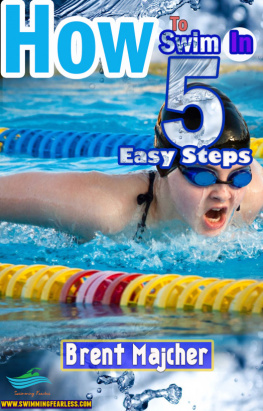

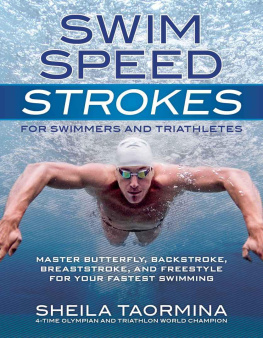
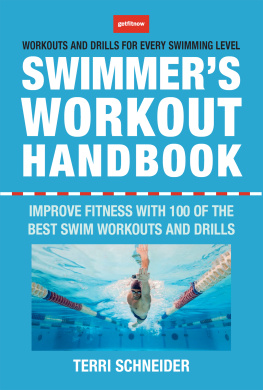

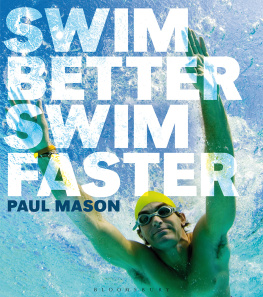
 s w i m m i n g s c i e n c e Line weights.. CH1_SP2_G2 swimming scienceEdited by G . J o h n M u l l e noptimizing training and performance THE UNIVERSITY OF CHICAGO PRESS
s w i m m i n g s c i e n c e Line weights.. CH1_SP2_G2 swimming scienceEdited by G . J o h n M u l l e noptimizing training and performance THE UNIVERSITY OF CHICAGO PRESS  The University of Chicago Press, Chicago 60637 2018 by Quarto Publishing plc All rights reserved. No part of this book may be used or reproduced in any manner whatsoever without written permission, except in the case of brief quotations in critical articles and reviews. For more information, contact the University of Chicago Press, 1427 E. 60th St., Chicago, IL 60637.
The University of Chicago Press, Chicago 60637 2018 by Quarto Publishing plc All rights reserved. No part of this book may be used or reproduced in any manner whatsoever without written permission, except in the case of brief quotations in critical articles and reviews. For more information, contact the University of Chicago Press, 1427 E. 60th St., Chicago, IL 60637. ContentsIIntroductionCHAPTER ONEhydrodynamicsTiago M. BarbosaCHAPTER TWOtechniqueRod HavrilukCHAPTER THREEpool trainingRod HavrilukCHAPTER FOURdryland trainingAllan PhillipsCHAPTER FIVEnutritionKevin Iwasa-MadgeCHAPTER SIXinjury prevention and rehabilitationG.
ContentsIIntroductionCHAPTER ONEhydrodynamicsTiago M. BarbosaCHAPTER TWOtechniqueRod HavrilukCHAPTER THREEpool trainingRod HavrilukCHAPTER FOURdryland trainingAllan PhillipsCHAPTER FIVEnutritionKevin Iwasa-MadgeCHAPTER SIXinjury prevention and rehabilitationG.

 Maryland.
Maryland.